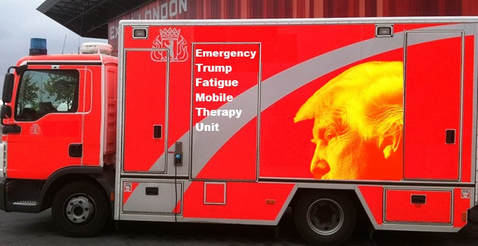2017 was a sad year.
This year, our dispirited and discouraging times are wholly characterized by the “Word of the Year” (WotY) selections by the various dictionaries and organizations, including one chosen by the Emmett Lee Dickinson Museum (formerly above the coin-op Laundromat on Dickinson Boulevard in historic Washerst, PA, the birthplace of Emmett Lee Dickinson, Emily Dickinson’s third cousin, twice removed at her request).
As a matter of fact, the depressing descent of our country over the past few years is completely evident in the recent WotY choices over time:
Dictionary-dot-com: From "identity" (2015) to "xenophobia" (2016) to "complicit" (2017)
Merriam-Webster: From "culture" (2014) to the suffix “-ism” (2015) to "surreal" (2016), to "feminism" (2017)
Collins Dictionary: From “binge watch” to “fake news” over the past few years
Oxford English Dictionary: From the tears-of-joy emoji in 2015 to "post-truth" (2016) to "youthquake" in 2017 (which left a lot of heads shaking)
American Dialect Society: From the singular use of the word “they” (2015) to "dumpster fire" (2016) to "fake news" (2017)
Emmett Lee Dickinson Museum: From “love” (remember “Love Wins”?) in 2015 to "divided" in 2016 to “sad” in 2017
| "'Sad' is undeniably the most accurate word to exemplify 2017,” said Zada Sapworth, the Southwest Regional Relational Metrics Specialist and Response Planner for the American Psychological Association. “‘Sad’ not only characterizes the pathetic state of affairs our country finds itself in,” said Sapworth, “but it aptly represents the alarming increase in the number of cases of depression brought on by Trump fatigue.” Acute Trump Fatigue (ATF) is the latest disorder to be recognized by the World Health Organization, and its escalation around the world is shocking. “The APA cannot keep up with the demand for Emergency Trump Fatigue Mobile Therapy Units,” said Sapworth. "Trump’s relentless attacks on facts as he tries to portray the truth as ‘fake news’ is as insidious as it is harmful." Pictured at the right: Zada Sapworth, Southwest Regional Relational Metrics Specialist and Response Planner for the American Psychological Association. |
Pictured below: One of the APA's thousands of Emergency Trump Fatigue Mobile Therapy Units being deployed across the country.
Trump’s unyielding attack on the truth was certainly on the minds of the members of the American Dialect Society when they chose “fake news” as their Word of the Year for 2017. The word emerged in the ADS’ vote for Word of the Year in 2016; however, a nefarious shift in how the word was used by Trump made it stand out even more in 2017.
| “When President Trump latched on to fake news early in 2017,” said Ben Zimmer, chair of the American Dialect Society’s New Words Committee and language columnist for the Wall Street Journal, “he often used it as a rhetorical bludgeon to disparage any news report that he happened to disagree with. That obscured the earlier use of fake news for misinformation or disinformation spread online, as was seen on social media during the 2016 presidential campaign.” Information from the ADS on their selection of “fake news” as 2017’s Word of the Year is HERE. Pictured at the left: Ben Zimmer, chair of the American Dialect Society’s New Words Committee and language columnist for the Wall Street Journal |
The ELD Museum has written about Trump and “fake news” in the past (HERE and HERE), and of course, it calls to mind Emmett Lee Dickinson’s poem “I heard the news – yet feared – the News” (below on the left). His poem is the source from which the term “fake news” originated, and it also inspired third cousin Emily to pen her poem, “I sued the News — yet feared — the News” (below on the right).
| By Emmett Lee Dickinson: I heard the News – yet feared – the News That such a Stance he’d take – The White House daily Rant – it is So obviously fake – | By Emily Dickinson: I sued the News – yet feared – the News That such a Realm could be – "The House not made with Hands" it was – Thrown open wide to me – |



 RSS Feed
RSS Feed
